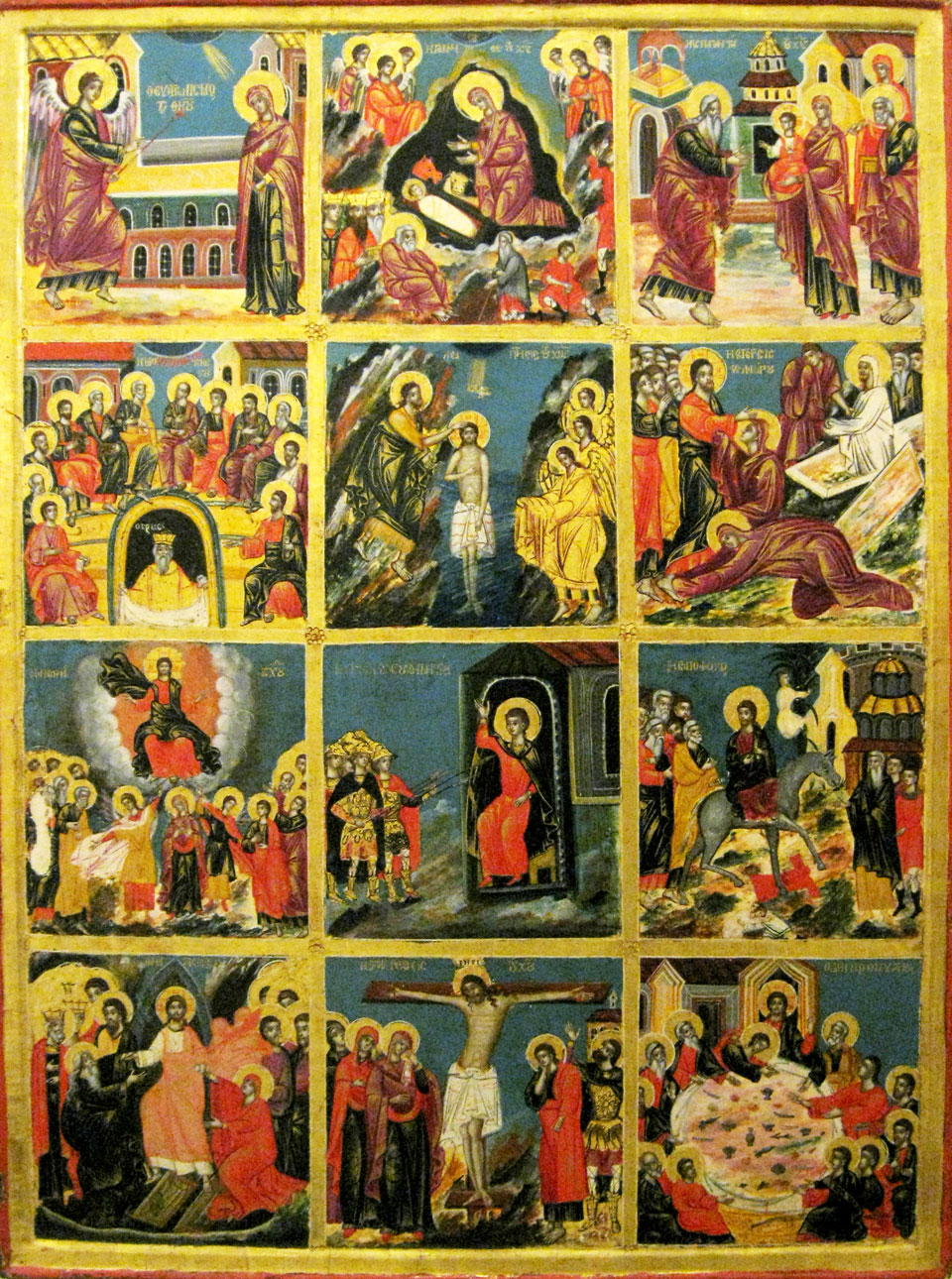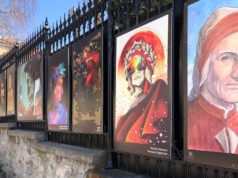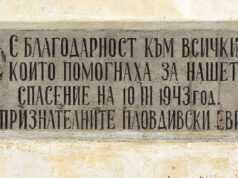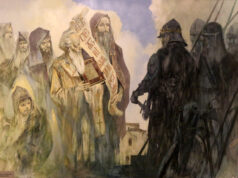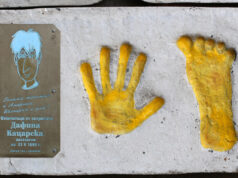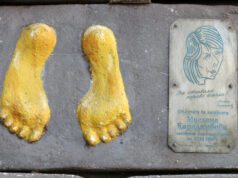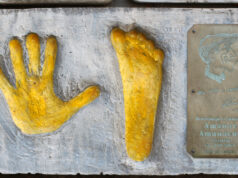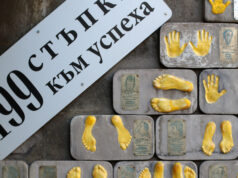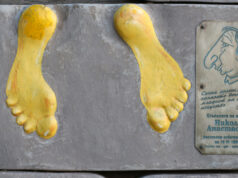There are twelve great feasts celebrated in the Bulgarian Orthodox Church. Each feast celebrates an event in the life of Jesus or of his mother Mary, the Theotokos (God-bearer), and corresponds to a significant event in the church calendar. Most of the great feasts are one day celebrations. Christmas and Easter are entire seasons in the church, with significant periods of preparation in advance of the celebratory dates.
Twelve Great Feasts of the Bulgarian Orthodox Church
The twelve great feasts of the Bulgarian Orthodox Church in order of their celebration during the liturgical year:
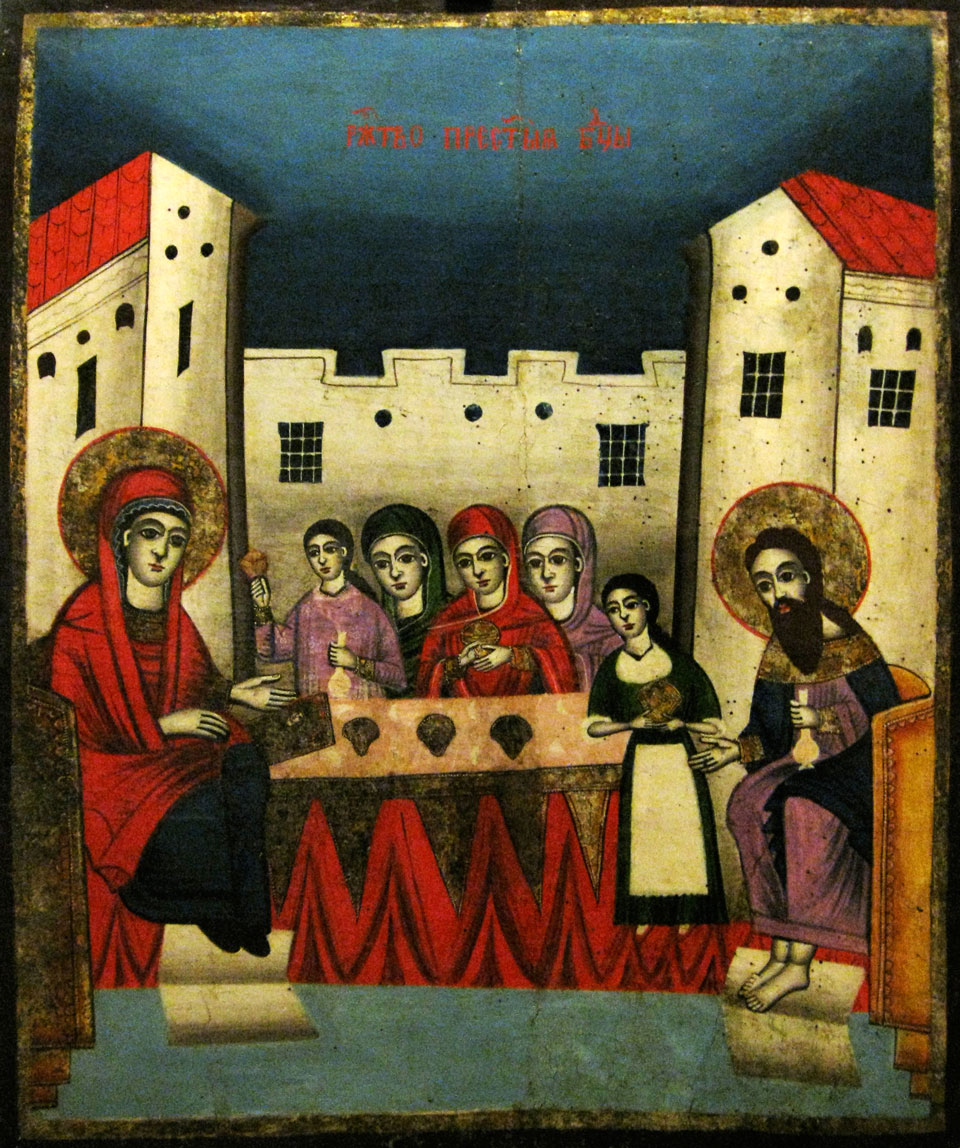 Feast of the Nativity of the Theotokos – Celebrated on 8 September. This feast commemorates the birth of Mary, the mother of Jesus. Unusual in that most saints are celebrated on their day of death. Called the Birth of the Blessed Virgin Mary in the western church.
Feast of the Nativity of the Theotokos – Celebrated on 8 September. This feast commemorates the birth of Mary, the mother of Jesus. Unusual in that most saints are celebrated on their day of death. Called the Birth of the Blessed Virgin Mary in the western church.
Feast of the Universal Exaltation of the Precious and Life-creating Cross – Celebrated on 14 September. Commemorates the discovery of the true cross in 326 and its recovery in 628 from the Persians who had stolen it. The feast recalls the consecration day of the Church of the Holy Sepulchre, commissioned by Saint Helen, who had it built at the site of the discovery. In the western church this is often referred to as Holy Cross Day or Holy Rood Day.
Feast of the Entry of the Most Holy Theotokos into the Temple – Celebrated on 21 November. According to tradition, Mary’s parents prayed to the Lord that if they should be freed from barrenness, they would dedicate their child to the service of the Lord. To fulfill their promise, they brought Mary to the temple as a young child, leaving her there to live and serve. In the western church this holiday is called the Presentation of the Blessed Virgin Mary.
 Feast of the Nativity of Our Lord (Christmas) – Celebrated on 25 December. Preceded by a period of preparation marked by a 40 day fast, starting on 15 November. This feast commemorates the birth of Jesus at Bethlehem. The earliest record of the feast has it celebrated by St. Clement on 20 May. It was observed in different ways at different locations until the 4th century, when it was finally fixed on 25 December to replace a popular Pagan feast previously celebrated on that day.
Feast of the Nativity of Our Lord (Christmas) – Celebrated on 25 December. Preceded by a period of preparation marked by a 40 day fast, starting on 15 November. This feast commemorates the birth of Jesus at Bethlehem. The earliest record of the feast has it celebrated by St. Clement on 20 May. It was observed in different ways at different locations until the 4th century, when it was finally fixed on 25 December to replace a popular Pagan feast previously celebrated on that day.
Feast of the Theophany of Our Lord – Celebrated on 6 January. This feast commemorates the appearance of the Holy Trinity at the baptism of Jesus in the Jordan river. It corresponds to Epiphany in the western calendar, but is more strictly focused on the baptism of Jesus, rather than the broader inclusion of the visit of the wise men and the turning of water into wine commemorated on the same date in the western church.
Presentation of Jesus at the Temple – Celebrated on 2 February, exactly 40 days after Christmas. the date corresponds to the day on which Mary, according to Jewish law, would have participated in the rite of purification at the temple following the birth of Jesus. See Luke 2:22-39. Traditionally called Candlemas in the western church.
Feast of the Entry of the Lord into Jerusalem – A moveable feast celebrated one week before Easter Sunday. Commemorates Jesus’ entry into Jerusalem the week of his crucifixion, mentioned in all four of the canonical Gospels. See Matthew, Mark, Luke, John, . In Bulgarian it is called Tsvetnitsa (BG: Цветница), or Flower Day. It is the name day for all people with flower names. Called Palm Sunday in the western church.
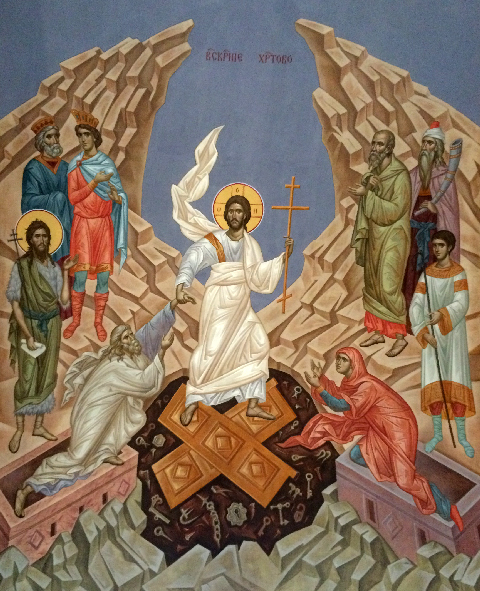 Feast of Easter – A moveable feast celebrating the resurrection of Jesus Christ from the dead. The greatest of all feasts, also called the Feast of Feasts. Easter is a five day celebration starting on Maundy Thursday (preceding Easter Sunday) and continuing through Easter Monday, the day following Easter Sunday. This Feast is the pinnacle of the church year and commemorates the cornerstone event of the Christian faith. The method for calculating the appropriate date for Easter is a point of contention between the eastern and western churches, resulting in a division among the faithful regarding annual Easter celebrations and confusion among Christians whose lives straddle both worlds.
Feast of Easter – A moveable feast celebrating the resurrection of Jesus Christ from the dead. The greatest of all feasts, also called the Feast of Feasts. Easter is a five day celebration starting on Maundy Thursday (preceding Easter Sunday) and continuing through Easter Monday, the day following Easter Sunday. This Feast is the pinnacle of the church year and commemorates the cornerstone event of the Christian faith. The method for calculating the appropriate date for Easter is a point of contention between the eastern and western churches, resulting in a division among the faithful regarding annual Easter celebrations and confusion among Christians whose lives straddle both worlds.
Feast of the Ascension of Our Lord – A moveable feast celebrated forty days after the resurrection of Jesus, on the sixth Thursday following Easter Sunday. This feast commemorates the departure of Jesus from the earth after his resurrection. Since the date of this feast depends on the date of Easter, it is often celebrated on different days in the eastern and western churches.
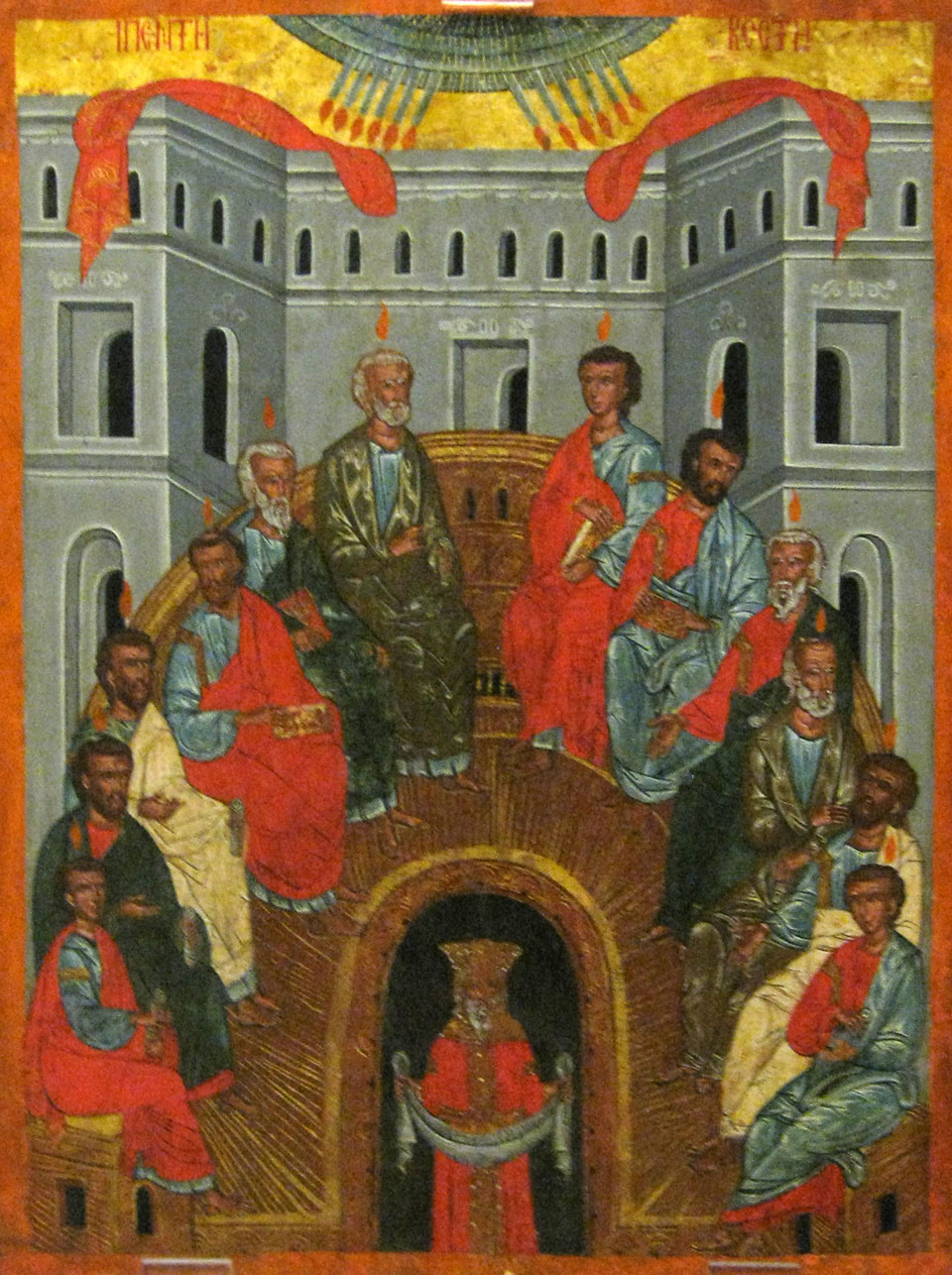 Feast of Pentecost – A moveable feast celebrated on the eighth Sunday of the Easter season, fifty days after Easter Sunday. This feast commemorates the coming of the Holy Spirit recorded in the second chapter of the New Testament book of Acts (Acts 2:1-40). Also called Whit Sunday in the western church. Like the Feast of the Ascension, the date of Pentecost depends on the date of Easter, so it is often celebrated on different dates by eastern and western churches.
Feast of Pentecost – A moveable feast celebrated on the eighth Sunday of the Easter season, fifty days after Easter Sunday. This feast commemorates the coming of the Holy Spirit recorded in the second chapter of the New Testament book of Acts (Acts 2:1-40). Also called Whit Sunday in the western church. Like the Feast of the Ascension, the date of Pentecost depends on the date of Easter, so it is often celebrated on different dates by eastern and western churches.
Feast of the Transfiguration – Celebrated on 6 August. This feast commemorates a New Testament event in which Jesus, while praying on a mountain, radiated bright light and the prophets Moses and Elijah appeared to speak with him (Matthew 17:1-8, Mark 9:2-8, and Luke 9:28-36). The feast celebrates the Holy Trinity because all three persons of the Trinity are interpreted as present in the event.
Feast of the Dormition of the Theotokos – Celebrated on 15 August. This feast commemorates the death of Mary, the mother of Jesus, and her bodily resurrection before being taken up into heaven. The word dormition, or falling to sleep, is a euphemism often used in the church to describe physical death.
Other Great Feasts not Counted Among the Twelve
There are five additional feasts that are called great feasts that do not count among the twelve. Here they are listed in order of occurrence during the liturgical year:
Feast of the Protecting Veil of the Theotokos – Celebrated on 1 October. This feast commemorates a 9th century appearance of Mary for the protection of believers in Constantinople (today Istanbul).
Feast of the Circumcision of Christ – Celebrated on 1 January. This feast commemorates the circumcision of Jesus according to Jewish law, on the eighth day after his birth.
Feast of the Nativity of St. John the Baptist – Celebrated on 24 June. This feast commemorates the birth of John the Baptist, also called the Forerunner, because his role was to prepare the way for the coming of Jesus.
Feast of Saints Peter and Paul – Celebrated on 29 June. This feast commemorates the martyrdom of Saints Peter and Paul in Rome.
Feast of the Beheading of St John the Baptist – Celebrated on 29 August. This feast commemorates the death of St John the Baptist by order of Herod Antipas.
Learn More About the Great Feasts
Here are a few resources for people who want to know more about the great feasts:
Meditations for the Twelve Great Feasts, by Vassilios Papavassiliou. Introduction to each of the twelve Great Feasts, with meditations to encourage those who want to know more about them. Buy it now on Amazon
Feasts of Faith: Reflections on the Major Feast Days, by William C. Mills. Pastoral reflections on the great feasts of the Orthodox Church. Intended to encourage believers through the reading and study of scriptures related to the feasts. Buy it now on Amazon
The Incarnate God: The Feasts of Jesus Christ and the Virgin Mary (2 Volume Set), by Catherine Aslanov, Paul Meyendorff and Andrew Tregubov. An accessible catechism intended for study groups. A rich resource for studying the feasts. Buy it now on Amazon
And for children…
My Book of Church Feasts, from Potamitis Publishing House. A coloring book for enjoyment and instruction. Buy it now on Amazon
The Twelve Great Feasts of the Orthodox Church: Activity Book for Children, by Lengua Viva. Introduction, word games and coloring for children. Appropriate for individuals and groups. Buy it now on Amazon


